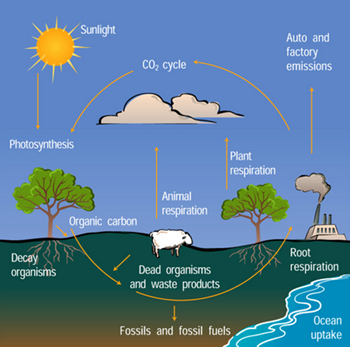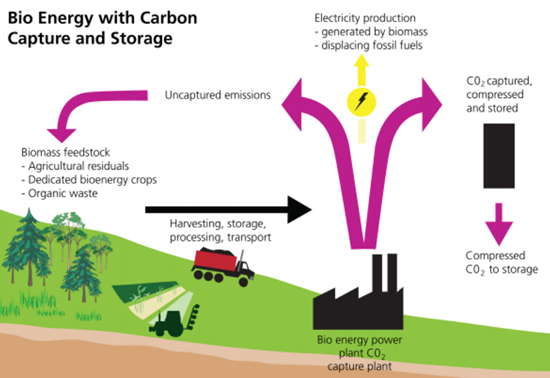Carbon capture and storage Carbon is part of a natural cycle called the carbon cycle.
Over millions of years some carbon got 'trapped out of the cycle' within fossilised remains layers in the earth. Those layers form our fossil fuels: coal, oil and natural gas. During the last couple of centuries we have put tonnes of that trapped carbon back into the atmosphere and scientists are worried that this has had a serious effect on our planet's climate - Global Warming. To counter this effect we are now trying to trap carbon to replace the carbon we release. BECCS: Bio-Energy with Carbon Capture and StorageBiomass is carbon neutral. All plants absorb carbon dioxide from the atmosphere via photosynthesis and transform the carbon taken from the air into plant matter. The carbon taken from the atmosphere to form the plant matter is released back into the atmosphere on burning it as a fuel. Therefore there is no increase in CO2 level - but no decrease either. BECCS uses biomass production to extract carbon dioxide from the atmosphere. But once the carbon is 'trapped' or captured by growing biomaterials, it is not allowed to return to the air. Storing this bio-material so that it does not release the carbon back into the atmosphere when the plant matter is burned or decays is termed 'carbon storage'. The aim is to permanently store it in deep geological formations - just as nature did over billions of years. Some of the best natural containers for this carbon material are old oil and gas fields, such as those under the North Sea. |
Follow me...
|







